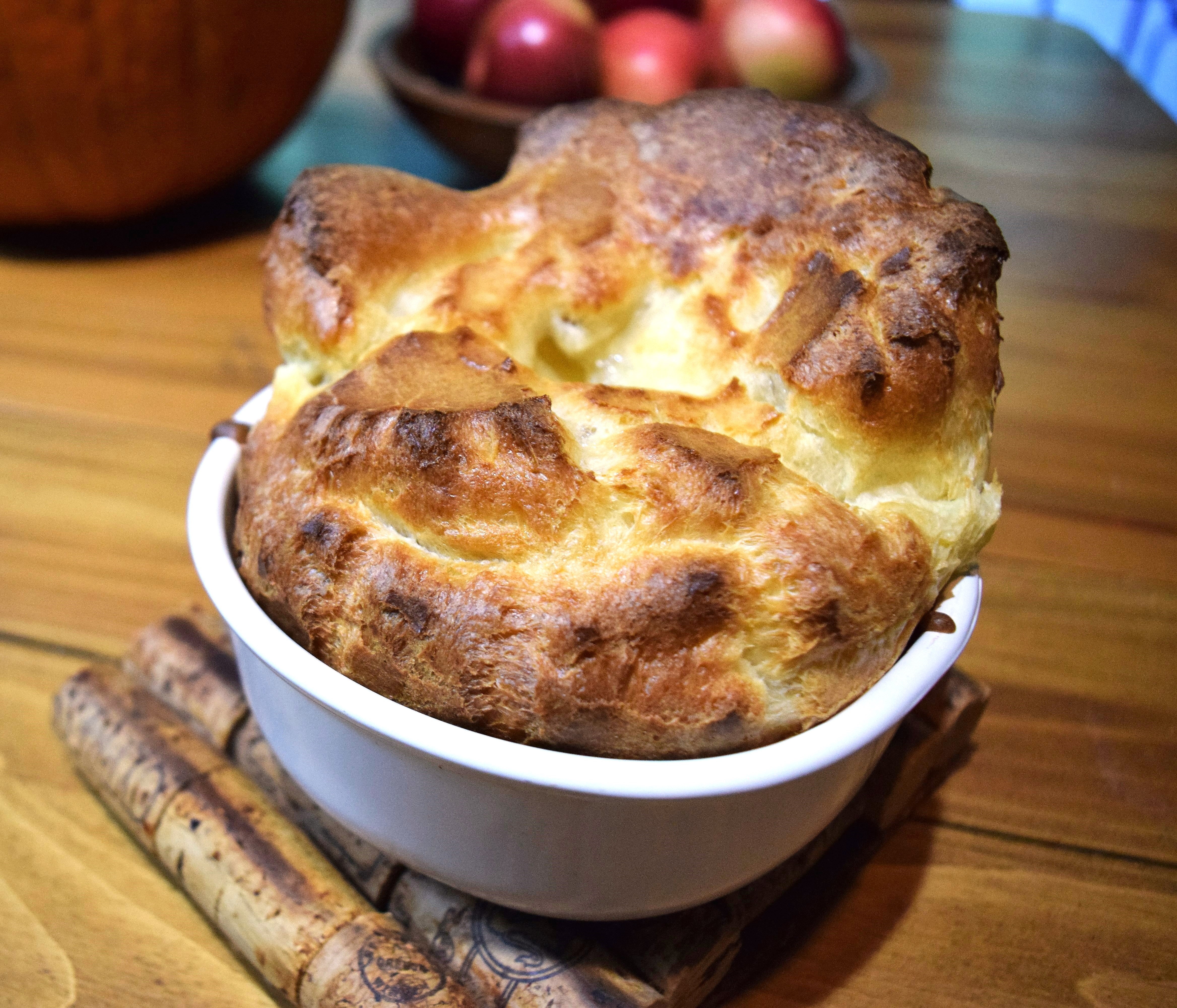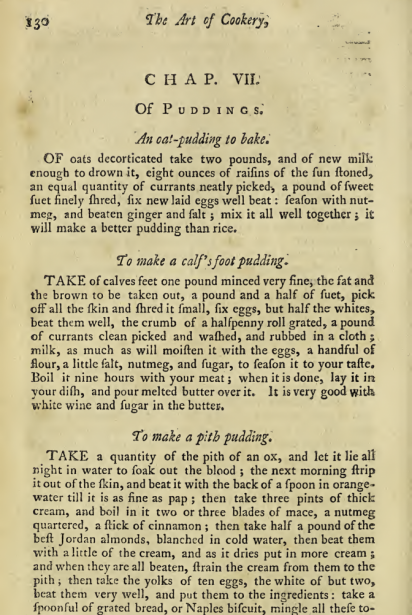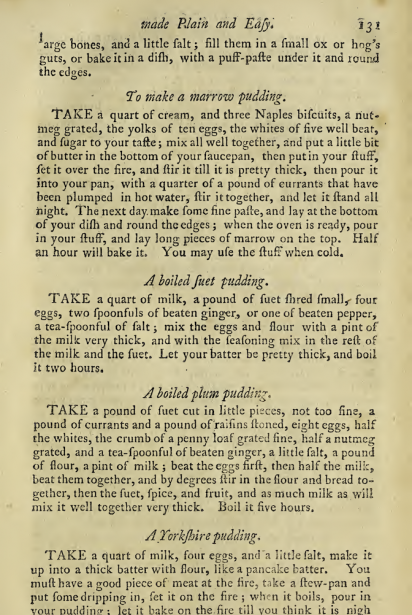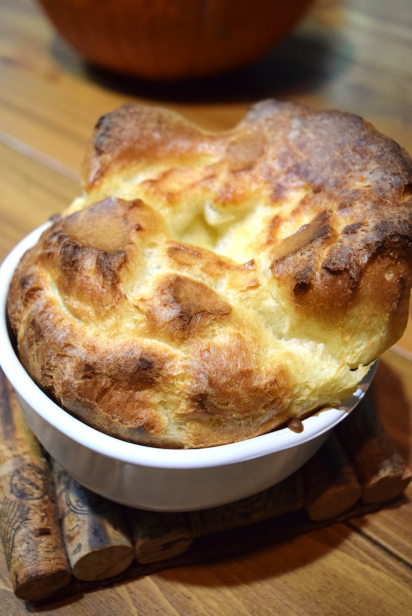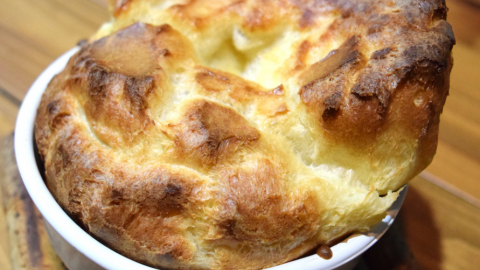Popovers, Pastries, and Puddings, Oh My!
Most Americans hear, “pudding,” and think of a creamy or custard-like dessert. However, throughout the history of food, the English word, “pudding,” has signaled many different foods, from stuffed pastry to meat-based concoctions, like blood pudding. One of the most mysterious for those of us on this side of the pond is “Yorkshire Pudding,” a name that has some of the same otherworldly implications as “Turkish Delight” and “Scotch Eggs.”
Although the dish had been made in England for centuries, the Yorkshire Pudding’s name first appeared in print in 1747, in Hannah Glasse’s Art of Cookery Made Plain and Simple. At that time, “batter puddings” were popular in England and America, savory dishes that began as flour, milk, and egg batter in equal proportions, which, when poured in a very hot, oiled, cast-iron pan, produced a light, crispy pastry. That pastry could then be filled with or covered by gravy and eaten as a sort of appetizer or accompaniment to the roast.
Traditional Yorkshire puddings would be made using the collected meat drippings from mutton, pork shoulder, or beef shank on a roasting spit. Those drippings gave the pastry itself a meaty flavor that is lost in later versions. Afterward, the meat and fixings are returned to the pastry and served straight from the roasting pan. Sometimes, cooked sausages were added to the pastry, creating “toad-in-the-hole.” The same recipe was also common in early New England but often without the name, “Yorkshire,” attached to it.
After stoves replaced open fires, the dish was prepared by slow-cooking a beef roast (à la Yankee Pot Roast), removing the meat, then pouring batter into the bubbling pan. Nevertheless, during the 19th century, the traditional version became less popular in the United States. Then, in 1877, an American recipe book called Practical Cooking and Dinner Giving, by Mary Foote Henderson, featured a recipe for “Pop-overs.” These pastries were made in a similar way to their predecessor but without meat drippings and usually in much smaller pans or muffin tins. Culinary queen Fannie Farmer also used the name “Pop-overs” and suggested pouring the batter into hot buttered pans. Originally a breakfast food, they began to be served as a side dish in traditional “American” restaurants or steak houses.
You might find these smaller side-dish versions of the Yorkshire classic served with beef-based dinners at the White Horse Country Pub in New Preston or Penny Lane Pub in Old Saybrook. The Popover Bistro and Bakery in Simsbury has delicious stuffed breakfast versions with eggs, cheese, and other delights. Still, the appeal of Yorkshire Pudding goes beyond the gentle, buttery crisp of the American version. When combined with a savory filling of meat and potatoes and gravy, this delightful all-in-one meal continues to delight folks throughout England and beyond. And whether called Popovers or Yorkshire pudding, they are surprisingly easy to make at home, here in Connecticut. Check out the recipe, below.


